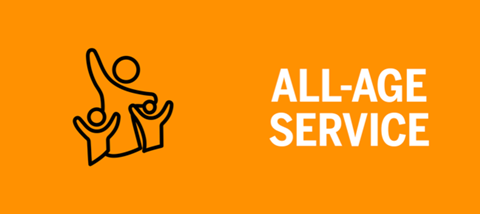
Registered users only: Download as a PDF here.
BIBLE PASSAGE: Joshua 3-4
BACKGROUND: God tells Joshua to build a monument from stones brought up from the Jordan as a memorial of what he has done in stopping the river for them. In this service we invite people to create their own memorials of what God has done for them to serve as reminders that we can rely on him in the future.
WELCOME ACTIVITIES
OPTION ONE: Junk modelling
You will need: junk, such as boxes, cardboard tubes, yogurt pots and kitchen foil; sticky tape; scissors; glue sticks Encourage the congregation to form small groups around piles of junk. Challenge everyone to work together to create a statue or memorial. Set a time limit, then get each group to show off their creation and explain what it’s about. (You could do this as an activity for people to join in with as they arrive.)
OPTION TWO: Quiz
You will need: photos of famous monu- ments (local, national and international) Before the service, collect together ten or so photos of famous monuments and put them into a PowerPoint presentation.
Make sure you include some that children and young people will recognise. Have a quiz to see how many people recognise. Can they identify what the monuments commemorate?
BIBLE STORY
You will need: a large box; two long garden canes or broom handles; twelve shoeboxes (or similar-sized boxes); blue fabric
Before the service, stick the two canes or handles onto the large box, one on each side. Leave an equal length extending
at both ends so that it can be carried by volunteers at the front and back. Spread the blue material out across the front of your meeting space to represent the River Jordan, positioning the shoeboxes in and around the ‘water’. Then tell the following story:
God had rescued the people of Israel from slavery in Egypt, and had promised to take them into a new land that they could make their home. However, the Israelites had turned their back on him time and again, so they had to wander around the desert for 40 years before they were able to come to their new home. But finally they were there, standing on the banks of the River Jordan and looking across the water at the Promised Land. Stand next to your river and point across to the other side.
Their leader Joshua spent time with God, and God told him what the people needed to do. They had to make them- selves acceptable to God and be ready to cross into the new land. Joshua told the priests to pick up the Ark of the Covenant – the sacred box that symbolised God’s presence with his people – and walk to the edge of the river. Ask for some volunteers to pick up your box using the handles and stand at the edge of the blue material.
As soon as their feet touched the water the river stopped flowing. It backed up further upstream, and dry land appeared in front of them. Roll back the blue material to reveal dry land and some of the shoeboxes.
The priests walked into the centre of the river. Ask them to do so. The people of God could cross the River Jordan without even getting their feet wet! Ask for some volunteers to be the people of God and cross the river with you.
Joshua told one person from each of the twelve tribes of Israel to collect a stone from the riverbed and bring it across with them. Ask your ‘people of God’ volunteers to collect the shoeboxes and bring them across. He told them to use the stones to build a monument as a way of remember- ing what God had done. They do so. Finally, the priests carrying the ark walked up the bank and the waters flowed again. They do so. Roll out the blue material once more.
Joshua told the people: “When your children ask you what these stones mean, tell them what God did for you today!”
SMALL GROUPS
You will need: copies of the questions below; Bibles
Break into small groups made up of one or two families, or different mixed-age groups. Give each group a copy of these questions and a Bible:
- What did you like about the story?
- What surprised you?
- Why did the people build a monument?
- What does this story tell you about God?
- What could you build a monument for in your life? What has God done for you?
Give the groups time to chat about these questions, referring back to the Bible passage if they need to.
REVIEW
You will need: a roving mic (if needed) Ask for feedback on questions two and three from ‘Small groups’, using a micro-
phone to hear people’s contributions if your meeting space is large.
RESPONSE ACTIVITIES
Set these three activities up in different parts of your meeting space. Explain what each one is and encourage people to go to the one that will help them process what they have discovered most effectively.
OPTION 1: Stone decorating
You will need: smooth, flat pebbles; art materials
Invite those who choose this option to use the art materials to decorate a stone. Encourage them to think about what God has done for them that they can create a memorial for.
OPTION 2: Discussion
You will need: volunteers to facilitate discussion; paper and pens
Gather people together in small groups, each with a facilitator, and challenge them to think about the difference everything they have discovered today will make in their lives.
OPTION 3: Psalm writing
You will need: Bibles; pens and paper
Ask people to write a song or poem to God that celebrates what he has done for them, using the book of Psalms as their inspira- tion. If people are struggling for ideas they could use the format of Psalm 136 as a starting point.
CLOSING
Bring everyone back together and ask if anyone would like to share what they did, thought about or discussed during the response time. Thank everyone for taking part and say an appropriate blessing to close the service.
Supporting documents
Click link to download and view these files1016654.pdf
PDF, Size 1.34 mb




























